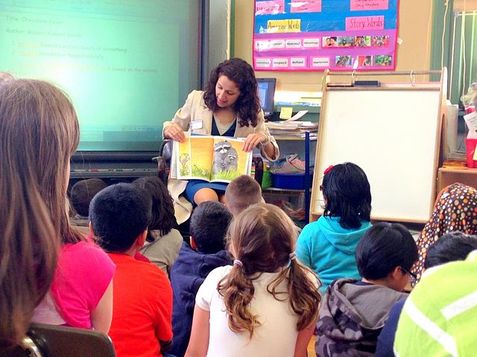Should I Read That Out Loud?"We continue to see empirical results and hear respected voices telling us 'this is good for kids' and 'here is why it is good for kids' at all grade levels." ~Stephen Layne
Research shows reading out loud:
|
Click Here to Take the
|
What about complexity?
When you are reading aloud to upper elementary grades or even secondary students, the complexity of the text is more important. You can still use picture books but you want a book that is high quality and read-aloud appropriate AND will stretch students in text complexity. Traits include:
When you are reading aloud to upper elementary grades or even secondary students, the complexity of the text is more important. You can still use picture books but you want a book that is high quality and read-aloud appropriate AND will stretch students in text complexity. Traits include:
|
Language conventionality is a stretch for students
|
Rich Language: complex meanings, stretch vocabulary
|
Language that provides strong Imagery
|
Complex, varied sentence structure with a purpose. Sentence length - word count
|
|
Implicit Theme/Idea: communicated through plot, character, actions, dialogue, setttings
|
Beyond students' life experiences - more complex
|
Engaging Complex Plot
|
Round Characters: dynamic, changing, malleable
|
DETERMINING COMPLEXITY: For a practical guide and a form to complete go to TeachingBooks and log in with your NC State email (the generic username is ncsucedmetrc and the password is wolfpack). Search for the title of the book and go to "View Text Complexity Results." You can select "Submit Your Own Qualitative Measures" to be guided through thinking about the complexity. Get more information at this Teaching Books Text Complexity Guide.
Book Lists |
Successfully Reading Out Loud
|
Resources
|

